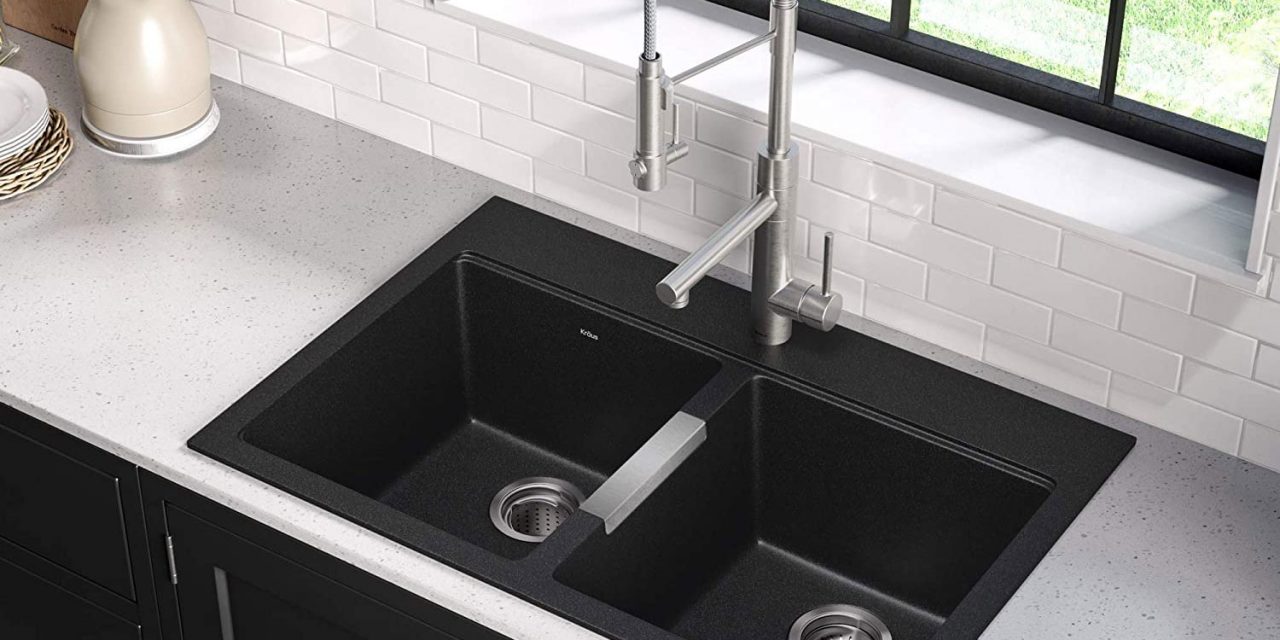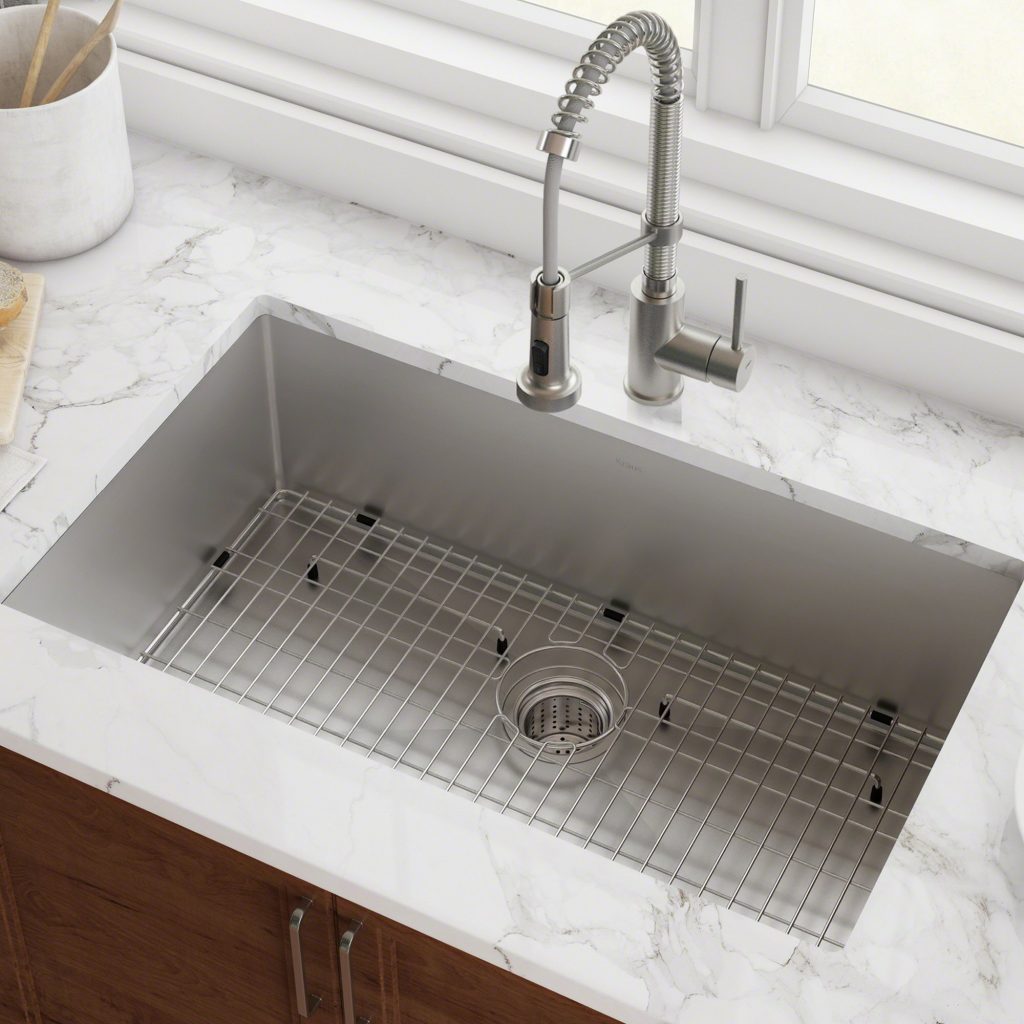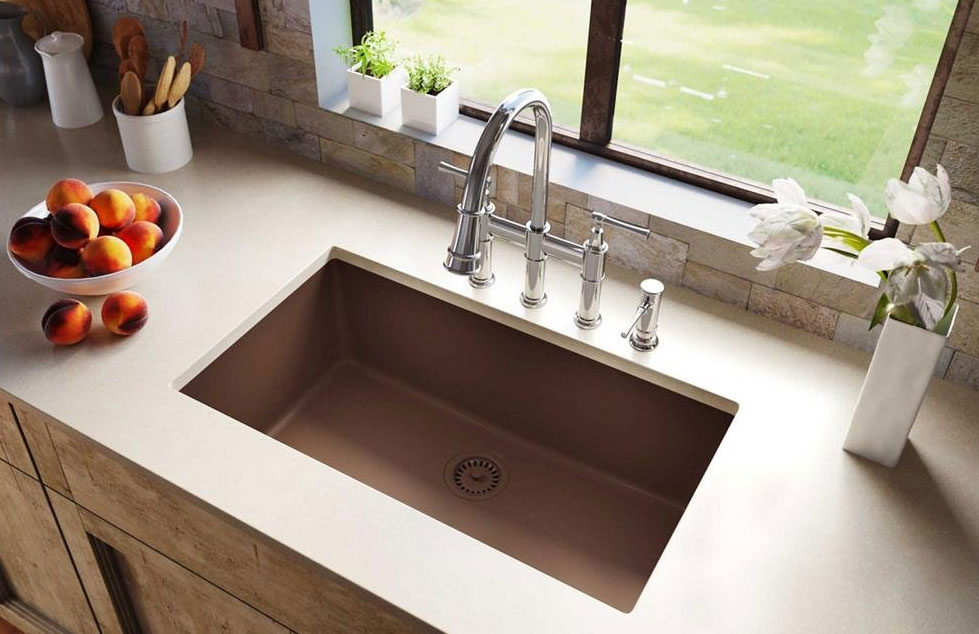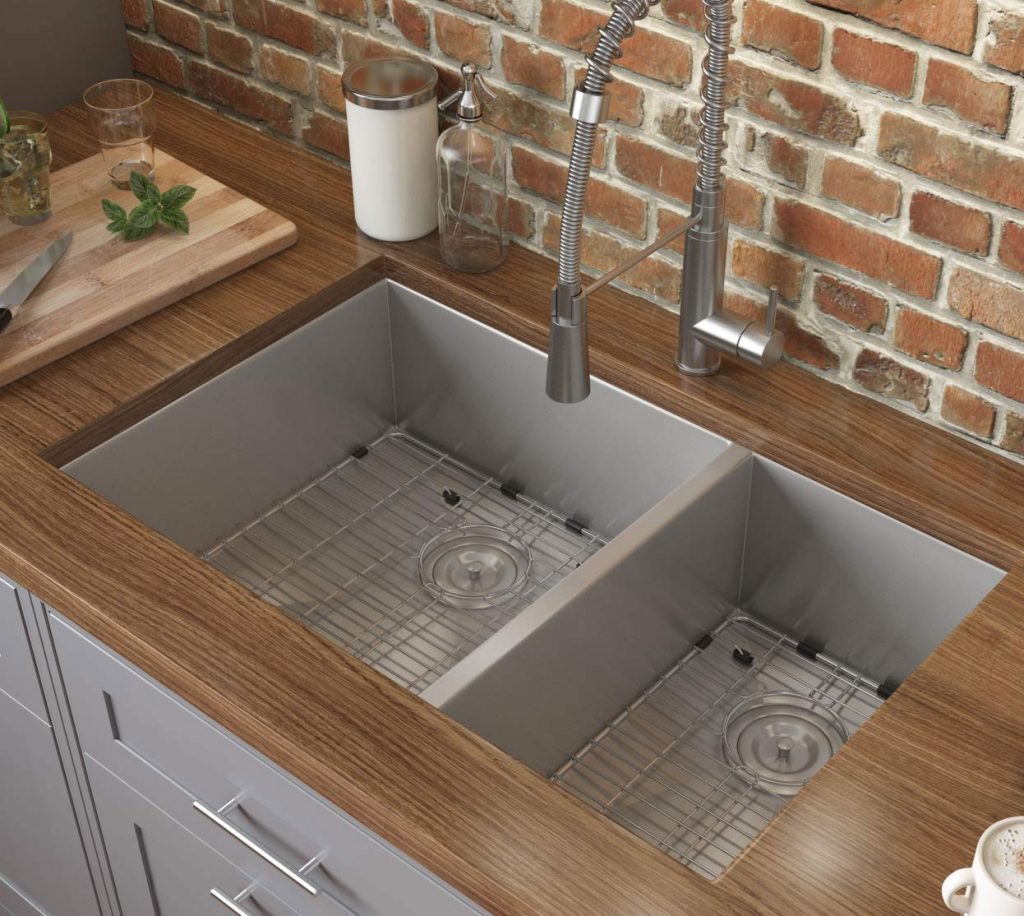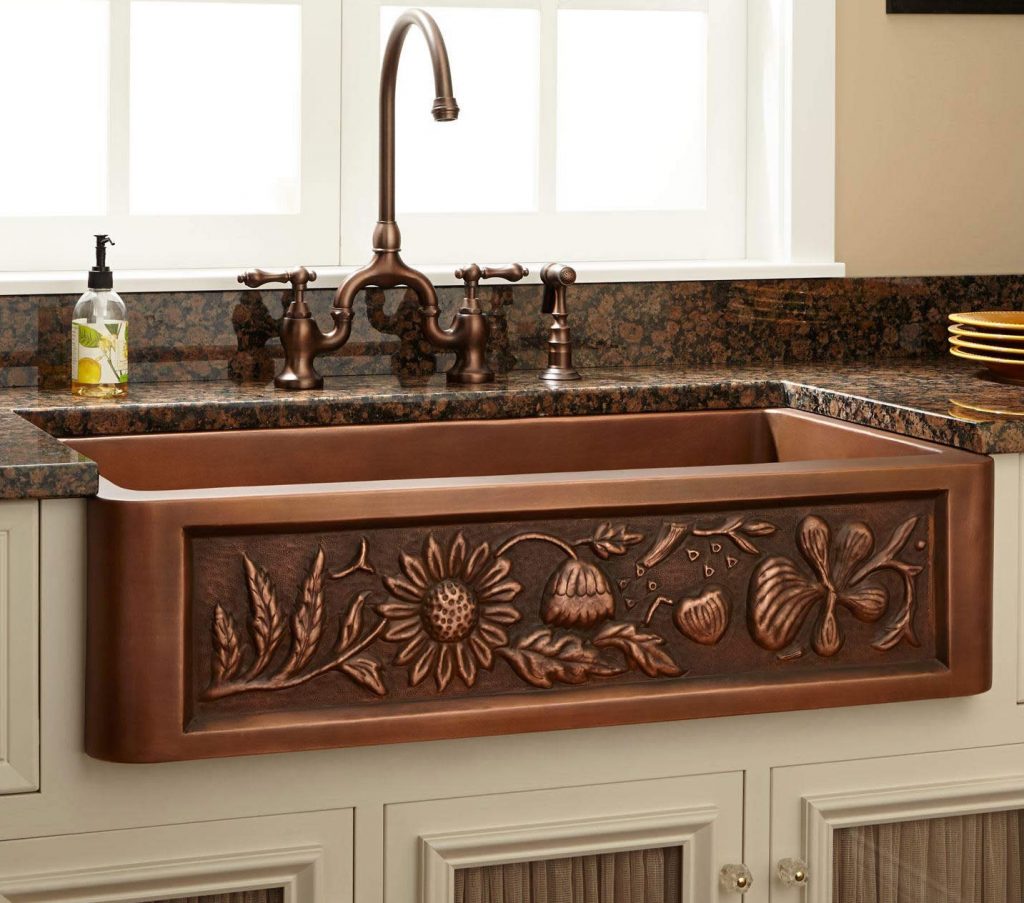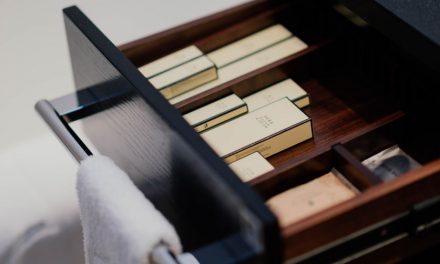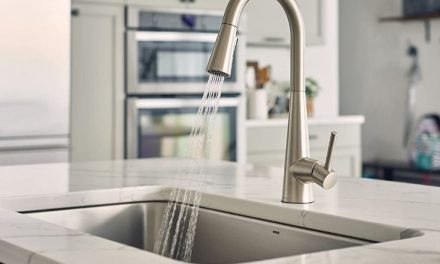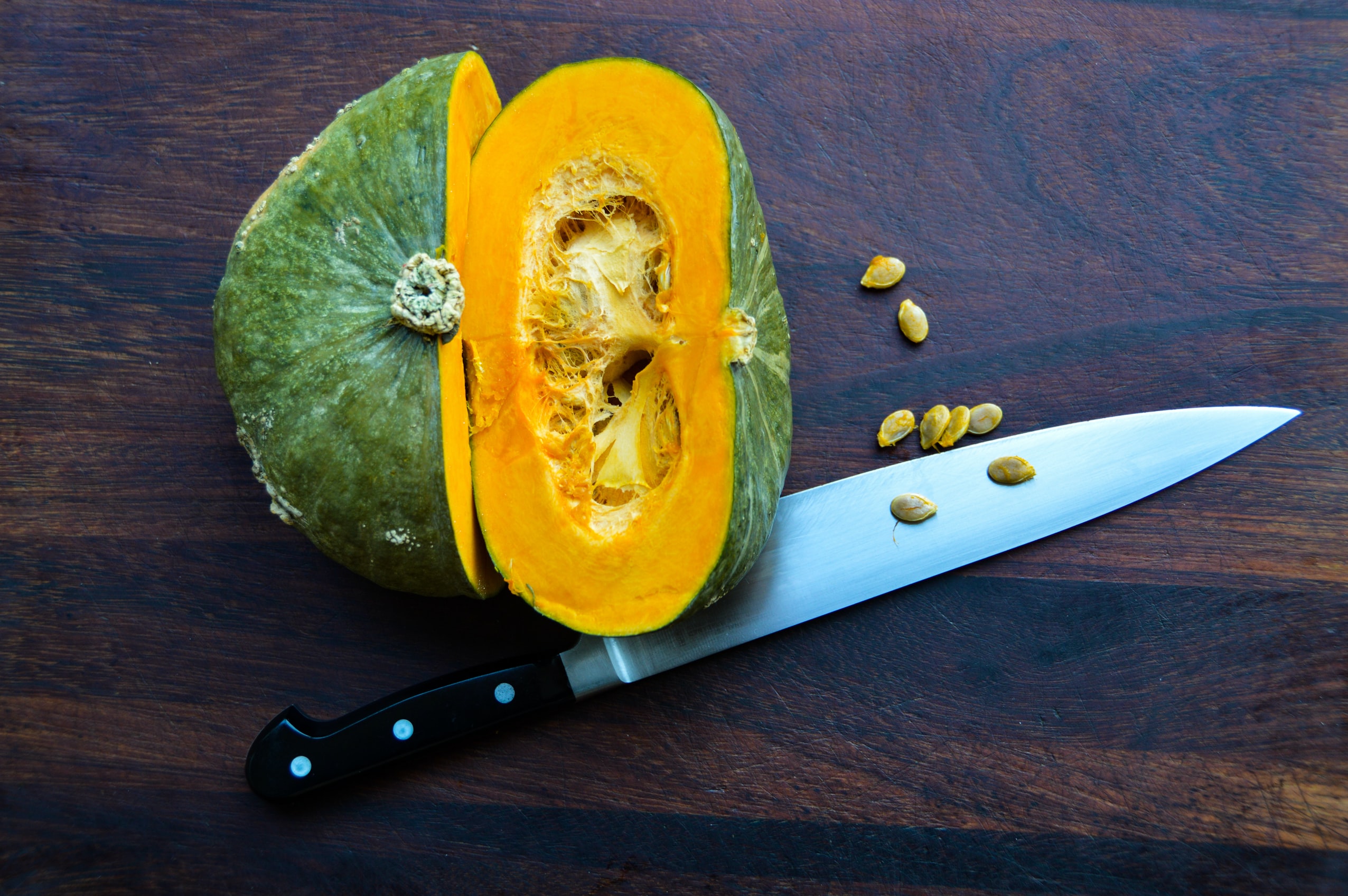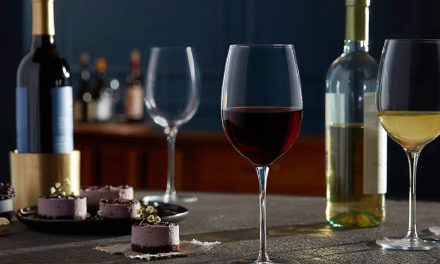When you’re building or remodeling your kitchen, the variety of sinks available on the market can quickly become overwhelming. Below you’ll find an overview of how materials, mounting systems, colors, and more affect style, as well as what to look for if you’re aiming for a modern or classic design for your kitchen.
What affects kitchen sink style
Much of what dictates the overall style of a sink is actually its technical specifications, namely what the sink is made out of, how it’s connected to your countertops, and how many bowls it has. So let’s talk materials and size.
Material and mounting
When it comes to a kitchen sink, the materials and mounting system used to install it determine the bulk of the style.
You have lots of material options, from metals, to composite stone, porcelain, fireclay, and more. They all have their pros and cons, but material really is the first thing you should decide on when choosing a kitchen sink.
By far, stainless steel is the most popular material. It’s affordable, long-lasting, and generally thought to have a modern appearance, especially when it’s got enough chrome in it to have a mirror-like shine. It’ll also have good resale value for this reason. This doesn’t mean other materials aren’t as good, however. How you use your kitchen should probably dictate the material of your sink. Some materials are easier to keep clean and can survive harsh use more than others.
Whatever material you choose, your sink’s appearance will also be affected by how it’s mounted to your countertop. There are really three mounting styles to choose from: undermount, drop-in (top mount), and apron-front / farmhouse mounting. Again, all of these options have their own pros and cons.
Generally speaking, undermount sinks are considered to have a sleeker, more modern appearance, but it’s really the combination of the material and how it’s mounted that decides the final appearance. These two things are inextricably entwined.
Learn more about…
Single-bowl vs. double-bowl
These days, provided you’ve got the space to support it, most people want a large kitchen sink. For this reason, the vast majority of kitchen sinks available on the market today are 30-34 inches wide (76-86 cm), though it is certainly possible to find smaller ones and, in some cases, larger. This average width makes them fit in well with the width of one or two typical base cabinets in a kitchen, which tend to run 18-36 inches wide individually (46-91 cm) when assembled. On the much smaller end of kitchen sinks, you’ve got bar or prep sinks, which are intended for chilling drinks or food preparation; they’re often only 10-20 inches wide (25-51 cm).
In the past, the number of bowls you chose tended to correspond with the overall size of the sink, but that’s not necessarily the case for most single- or double-bowl sinks anymore. Your sink will probably be in that 30-34-inch sweet spot, or maybe a bit larger if you choose to have more than two bowls.
Generally, single-bowl sinks look clean, sleak, and modern, but that doesn’t mean double-bowl sinks can’t or don’t. If anything, you might say double-bowl sinks simply look more utilitarian. So the number of bowls really comes down to aesthetic preferences and how you use your sink. In 2014, double-bowl sinks were the most popular choice for kitchen renovations, maybe because they’re so useful for washing dishes by hand, something many Americans continue to do, despite the cost and water efficiency of modern dishwashers. If you like washing your dishes by hand, a double-bowl sink may be more useful to you, and either can look modern or traditional, depending on the materials and mounting.
So if you’re building or remodeling a kitchen with plans to then soon sell the house, you can really go in either direction. According to industry research, single-bowl and double-bowl sinks are bought in similar numbers, so both remain popular options.
- Check out the bestselling single-bowl sinks on Amazon.
- Prefer double-bowl sinks? These are the best bestsellers.
Types of kitchen sink styles
So now that you’re aware of how materials and mounting affect appearance, let’s get down to norms. A lot goes into what we generally think of as modern, classic, or traditional. What’s generally true may not jibe with your local culture’s tastes. With that understanding, below you’ll find an overview of what’s typically considered modern or classic in kitchen sinks.
Modern sinks
Want your kitchen and its sink to look as modern as possible? Think clean and crisp.
Go for straight lines that have obvious edges and corners—in other words, stick with rectangular and square sinks. Zero-radius sinks are especially modern looking, as they have precise 90-degree angles, meaning their corners offer straight lines. For these reasons, undermount sinks often look the most modern, as your countertop will extend right to the edge of the sink before dropping off. Prefer drop-in sinks? They can still look very modern. Just keep to those straight lines.
For colors, choose from cool whites, bold statement pieces (charcoals, black, or a pop of color), or grays for neutrals. Stainless steel, particularly stainless that has an elegant brushed look or a mirror shine, is an obvious choice, but so, too, is composite stone, which can come in any color.
In most cases, you’ll want to avoid rounded looks and porcelains. And if you’re dead set on a farmhouse, or apron-front, sink, definitely go with stainless steel or a bold, crisp-lined composite stone in bold white or black, or one that is brightly colored. Anything else will look less modern.
One of the less obvious modern touches to kitchen sinks is offset drains. While not appropriate for every kitchen or its user, it’s a modern “quirk” you’re not likely to find in old school kitchens.
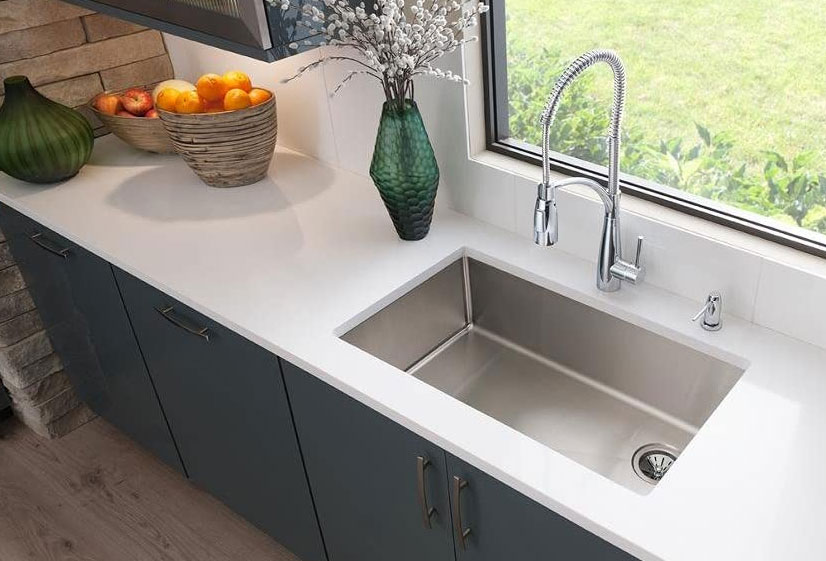
See Elkay’s Crosstown single-bowl zero-radius stainless steel undermount sink, which features a drain offset to the right in the basin.
Classic sinks
If you’re after a more classic or even traditional look, think neutral and/or warm colors, as well as rounded edges and shapes. Avoid crisp lines, as well as cool or bold colors. Keep your drains at the rear or center of your sink.
Given that stainless steel is popular for many reasons other than appearance, you may still want it in your kitchen, but even without a clean mirror shine, it definitely won’t offer the most classic look. For that, you’ll want porcelains, fireclays, or composite stones that embrace rounded edges and flat or matte colors. You don’t want a sparkling engineered quartz in your traditional kitchen. And if you’re willing to shell out the big bucks and commit to careful maintenance, consider copper.
Drop-in sinks or farmhouse sinks will look more classic or traditional than undermount sinks, which highlight crisp lines. The lip of most drop-in sinks will have rounded edges, and farmhouse sinks, while appearing more undermounted on the back and sides, have the (often rounded) apron front seen in old, traditional kitchens. Some even sport vintage patterns.
DIY kitchen sink considerations
Whether you’re committed to cutting-edge design principles, making nods to classic styles, or going all-in on tradition, there are some things that make DIY sink installation and maintenance easier than others. Here’s what you should consider:
- Undermount sinks look sleek and modern, but they’re harder to install yourself, and can come with some downsides if or when you need to repair them or remove them for plumbing maintenance. Drop-in sinks are just going to be easier, all-around, if you’re trying to avoid involving professionals.
- Some styles are heavy styles. If you’re doing things on your own, don’t overlook the weight of certain sinks, especially porcelain-enameled cast iron or composite stone.
- How long are you wanting your kitchen or sink style to last? Many people remodel their kitchens and/or bathrooms every 10-15 years. Anything past that point can start to look and feel dated. A good sink made of good, durable material can last much longer than that, but will its style? Today’s modern looks may look like cheesy design fads in the future. There’s really no way to know. Does that mean you should go with a classic kitchen? Not necessarily. It just means that this should be one thing you think about when deciding what features are most important to you.

